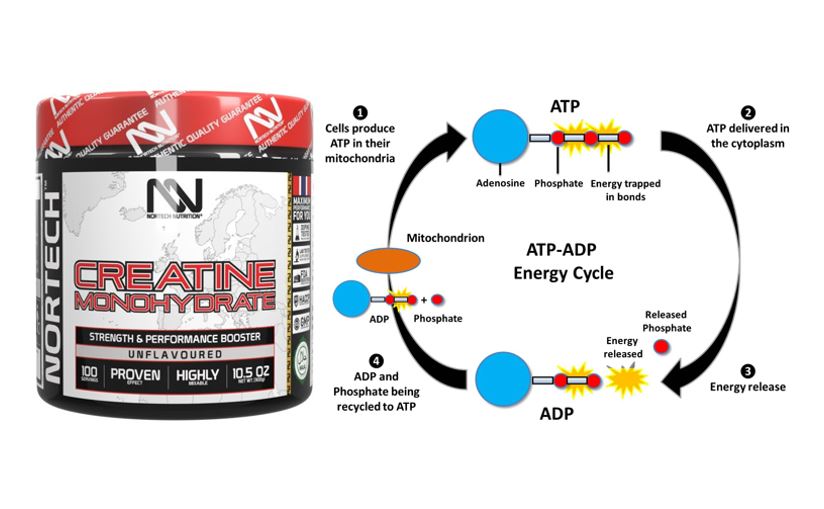ATP, the King of muscle power, Understanding the Relationship Between Creatine and ATP
If you’ve delved into the world of sports nutrition or fitness supplements, you’ve likely encountered two terms frequently: Creatine and ATP. But what exactly is the connection between them, and why are they often mentioned together? Let’s dive in and unravel this dynamic duo.
What is Creatine?
First things first, let’s talk about Creatine. It’s a naturally occurring compound found in our muscles and also sourced from foods like red meat and seafood. But why is it so revered among athletes?
Creatine plays a pivotal role in energy production. It aids in the rapid regeneration of ATP, our body’s primary energy molecule. But before we delve deeper into that, let’s understand what ATP is.
ATP: The Energy Currency of Our Cells
ATP, or adenosine triphosphate, is often dubbed the “energy currency” of our cells. Think of it as a rechargeable battery pack for our muscles. When we engage in activities, especially high-intensity ones like sprinting or weightlifting, adenosine triphosphate is broken down to release energy. This breakdown converts it to ADP (adenosine diphosphate), providing the necessary energy for muscle contractions. Many ask, why not take pure adenosine triphosphate as an supplement, althoug that would seams be a good ide, a closer look into taking orally it will not be bioavaliable. The molecules will be broken down in your stomac acid and rendered useless taken orally, as shown in this study.
There is some promising studies with the use of Sodium ATP that have promising results. Still it is not widely avaliable as an supplement. We will follow the research, for any uppertunity to launch such a product. But for now Creatine is the best bet, and most effective supplement with prooven track record that is the substrate to deposit large amount of adenosine triphosphate to muscle for energy use.
The Symbiotic Relationship: Creatine and ATP
Now, where does Creatine fit into this energy equation? Creatine acts as a rapid replenisher. When ATP is broken down, it needs to be regenerated to continue fueling our muscles. Here’s where Creatine steps in. Creatine aids in converting ADP back to adenosine triphosphate, ensuring a continuous supply of energy during intense activities.
Imagine you’re in the middle of a rigorous workout. As your muscles demand more energy, ATP levels deplete. However, with stored Creatine, creatine deposit new energy substrate faster and the regeneration process is hastened, allowing you to sustain performance for longer durations. This is why many athletes and fitness enthusiasts opt for Creatine supplementation – to enhance this energy regeneration process and boost performance. This means that you can overcome platau that normaly would stop you, and you can now go beyond your limits. Thus will result in a stronger muscle bulding signal as an response to the incresed stress or demand from muscles.
Beyond Energy: Additional Benefits of Creatine
While the relationship between Creatine and ATP is fundamental for energy production, Creatine offers other health and performance benefits. From promoting muscle growth and reducing mental fatigue to potentially aiding in conditions like Parkinson’s and Huntington’s disease, its benefits are vast and varied.
Wrapping Up
In the intricate dance of energy production within our cells, Creatine and ATP are the star performers. Their synergistic relationship ensures that our muscles receive the energy they need, especially during demanding activities. Whether you’re an athlete aiming for peak performance, or someone looking to optimize their workouts, understanding and harnessing the power of Creatine and ATP can be a game-changer.
So, the next time you reach for that Creatine supplement or hear someone extol its virtues, remember the dynamic relationship it shares with, and the pivotal role they play in energizing our every move.






